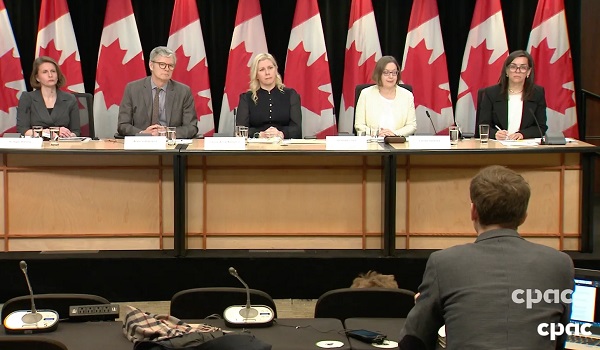Health
Gardening Pain-free from Pursuit Physiotherapy

 Follow these basic body mechanics tips for gardening safely!
Follow these basic body mechanics tips for gardening safely!
Gardening season is here! We want you to enjoy the outdoors without injuring yourself. It’s easy to get overzealous and spend hours in the garden without noticing an aching back or neck until it’s too late. But don’t worry, just because you have a long ‘to do’ list doesn’t mean you have to suffer the consequences. By planning ahead and being smart about your body mechanics you can help prevent soreness and injuries.
Follow these easy tips for staying healthy throughout the gardening season:
Lift properly to protect your back.
Remember to bend your knees and engage your core muscles; use your leg muscles to squat and don’t bend with your back.
- Avoid lifting and twisting through your back – instead keep the load close to your body and pivot your feet and trunk together
- Avoid carrying heavy loads on 1 side of your body – balance it out on both sides or lighten up the load and take more trips. Also consider getting help for heavy lifting – you can’t do it all!
Maintain good posture.
Position yourself close to the task at hand to avoid awkward reaching and twisting. Try to keep your back straight and head in a neutral position so that you are not looking up or down for extended periods of time.
- Use stools, chairs, or knee pads whenever possible to help maintain good neck and back posture.
- When pushing a wheelbarrow or lawnmower keep your back tall and head up. Also bend your knees and engage your core muscles to optimize your power and protect your spine.
- Take mini-breaks to stretch and correct your posture – try squeezing your shoulder blades together, or contracting your deep abdominal (TA) muscles.
Use Proper Tools to Reduce Strain
- Use knee pads for kneeling and avoid sustained squatting. This will give your knees, hips, ankles and back a break.
- Use a step stool or tools with extended handles to make overhead work easier. Bring yourself closer to your task to avoid awkward reaching and reduce neck and shoulder strain.
- Use tools with good grips or ergonomic handles to reduce fatigue on your hand and forearm muscles. Ensure they are a comfortable fit for your hand size.
Prevent Repetitive Strain Injuries
Doing the same task over and over will put excessive strain on certain body parts and muscle groups, leading to pain and injury. Here are some self-management tips to help avoid RSI’s:
- Change positions frequently to avoid stiffness and strain on certain body parts. For example try raking on both sides.
- Alternate tasks to add variety to your body movements and avoid static postures or repetitive lifting. For example do 10 minutes of weeding followed by 10 minutes of pruning.
- Take breaks to stretch and hydrate. It is important to give your body some time to recover, and adding these mini-breaks can help improve your work endurance and efficiency.
- Don’t overdo it! Create a realistic plan ahead of time so that you aren’t trying to get all your tasks done in a single day or weekend. Plan to spread your workload out over several days or weeks to avoid overuse injuries.
- Never work through pain. Listen to your body and stop when you are getting tired or sore. The task will still be there the next day or week!
Keep your body limber
- Warm-up before gardening with some light walking or gently swinging your arms and legs. This helps increase your heart rate and gets blood flowing to the muscles so they are ready to work.
- Take stretch breaks. Do some of your favourites and try to target all your major body parts – neck, shoulders, back, and legs. This will keep you feeling loose and flexible and prevent muscle tension from building up. Move slowly and hold each position for approximately 10-15 seconds.
- Cool-down. An easy walk around the yard and some gentle stretching will help relieve tension after your work and prevent muscle stiffness.
We hope these tips help keep you active, healthy, and pain-free throughout the spring and summer. If you have any lingering pain or specific concerns please do not hesitate to book an appointment for a one-on-one session with one of our physiotherapists. We will be able to assess and diagnose your injury, as well as provide hands on treatment and a therapeutic exercise program to address your specific needs.
Click for more information about Pursuit Physiotherapy.
Health
Dr. Pierre Kory Exposes the Truth About the Texas ‘Measles Death’ Hoax

“She did not die of measles by any stretch of the imagination. In fact, she died of pneumonia. But it gets worse than that…”
Turn on the news today, and you’ll hear about a measles outbreak in Texas. The headline? A 6-year-old girl has “died from measles.” The coverage is nonstop. And the goal is simple: to make you angry and afraid.
But here’s what they’re not telling you.
That little girl should still be alive. She should be at home with her mom, dad, and siblings. But their unconscionable loss, which is being heavily politicized, is not what the mainstream has led us to believe. Her death was the result of medical error. Plain and simple.
And you should be angry.
Join 100K+ Substack readers and 1.6 million 𝕏 users who follow the work of Vigilant Fox.
Subscribe for top-tier news aggregation and exclusive stories you won’t find anywhere else.
When this case first made the news, little was known. But those who know it’s okay to ask questions began asking them.
Was she vaccinated for measles? If so, was the vaccination done recently or while she was ill? What treatment did she receive, if any? Was she infected with the wild type, or was this due to a leaky vaccine? Did she die with measles or from it?
Children’s Health Defense (CHD) stepped up and interviewed the mourning parents to uncover the truth about what really happened to their 6-year-old daughter.
|
Headlines
|
|
Parents of Child Who Died During Texas Measles Outbreak Speak Out |
|
|
|
| This article originally appeared on The Defender and was republished with permission. | |
|
|
The emotional interview reveals the child was not vaccinated for measles. She fell ill, and while the spots faded quickly, her breathing was affected. Her parents became concerned and took her to the emergency room at Covenant Children’s Hospital in Lubbock, Texas.
It was all downhill from there. And before long, their daughter was gone.
Dr. Pierre Kory Shares Disturbing Information
In a display of journalistic integrity, CHD obtained the 6-year-old’s medical records from her parents. Dr. Pierre Kory, a critical care physician, had a chance to analyze the records and shared his thoughts with CHD.
According to Dr. Kory, the child “did not die of measles by any stretch of the imagination. In fact, she died of a pneumonia. But it gets worse than that, because she didn’t really die of pneumonia. She died of a medical error.”
Let that sink in.
Loving parents just lost their young child due to a medical error. But not only that, their story is being twisted and used to spread fear about measles and to push the measles vaccine—two things this family does not appear to agree with.
As it turns out, their four other children came down with measles following their sister’s death. All four were treated with cod liver oil (vitamin A) and budesonide (a steroid). And all four recovered quickly. No vaccination necessary.
Kory calls the case “absolutely enraging.”
“When you admit someone to the hospital for pneumonia, what you need to do is you treat what’s called empirically, meaning you put them on antibiotics that you think will cover the most common organism.”
Covenant Children’s Hospital failed to do this.
“I mean, this is like medicine 101. You put them on two antibiotics to cover all the possibilities. It’s a grievous error, and it’s an error which led to her death.”
Not only did Covenant Children’s Hospital fail to provide the appropriate antibiotics, when they noticed their error, they dragged their feet and delayed another 10 hours.
“By that time, she was already on a ventilator. And approximately 24 hours later, actually less than 24 hours later, she died.”
And she did not pass away peacefully. According to Kory, “she died rather catastrophically.”
“I can only surmise that she died of a catastrophic pulmonary embolism.”
Kory calls the whole thing “disturbing.”
And it is. What happened to this young girl at Covenant Children’s Hospital was indeed disturbing. But the way this tragedy is being portrayed in the media and used inappropriately and inaccurately to cause fear and push the measles vaccine is downright disgusting.
Gone are the days when people seek help from local media to expose injustices. The media machine has one job and it isn’t to help you.
This young girl should still be here. Hugging her parents and giggling with her siblings. Enjoying the start of Spring and looking forward to celebrating Easter.
Instead, the media is exploiting this family’s unimaginable loss to push an agenda, and social media is swirling with nasty criticisms.
We can only hope this poor family receive justice and support as they combat the unwarranted attacks on their character, choices, and way of life.
“Pray. Just pray for us. That’s the best you can do, for now,” the father said.
Subscribe to The Vigilant Fox.
For the full experience, upgrade your subscription.
Addictions
There’s No Such Thing as a “Safer Supply” of Drugs

By Adam Zivo
Sweden, the U.K., and Canada all experimented with providing opioids to addicts. The results were disastrous.
[This article was originally published in City Journal, a public policy magazine and website published by the Manhattan Institute for Policy Research. We encourage our readers to subscribe to them for high-quality analysis on urban issues]
Last August, Denver’s city council passed a proclamation endorsing radical “harm reduction” strategies to address the drug crisis. Among these was “safer supply,” the idea that the government should give drug users their drug of choice, for free. Safer supply is a popular idea among drug-reform activists. But other countries have already tested this experiment and seen disastrous results, including more addiction, crime, and overdose deaths. It would be foolish to follow their example.
The safer-supply movement maintains that drug-related overdoses, infections, and deaths are driven by the unpredictability of the black market, where drugs are inconsistently dosed and often adulterated with other toxic substances. With ultra-potent opioids like fentanyl, even minor dosing errors can prove fatal. Drug contaminants, which dealers use to provide a stronger high at a lower cost, can be just as deadly and potentially disfiguring.
Because of this, harm-reduction activists sometimes argue that governments should provide a free supply of unadulterated, “safe” drugs to get users to abandon the dangerous street supply. Or they say that such drugs should be sold in a controlled manner, like alcohol or cannabis—an endorsement of partial or total drug legalization.
But “safe” is a relative term: the drugs championed by these activists include pharmaceutical-grade fentanyl, hydromorphone (an opioid as potent as heroin), and prescription meth. Though less risky than their illicit alternatives, these drugs are still profoundly dangerous.
The theory behind safer supply is not entirely unreasonable, but in every country that has tried it, implementation has led to increased suffering and addiction. In Europe, only Sweden and the U.K. have tested safer supply, both in the 1960s. The Swedish model gave more than 100 addicts nearly unlimited access through their doctors to prescriptions for morphine and amphetamines, with no expectations of supervised consumption. Recipients mostly sold their free drugs on the black market, often through a network of “satellite patients” (addicts who purchased prescribed drugs). This led to an explosion of addiction and public disorder.
Most doctors quickly abandoned the experiment, and it was shut down after just two years and several high-profile overdose deaths, including that of a 17-year-old girl. Media coverage portrayed safer supply as a generational medical scandal and noted that the British, after experiencing similar problems, also abandoned their experiment.
While the U.S. has never formally adopted a safer-supply policy, it experienced something functionally similar during the OxyContin crisis of the 2000s. At the time, access to the powerful opioid was virtually unrestricted in many parts of North America. Addicts turned to pharmacies for an easy fix and often sold or traded their extra pills for a quick buck. Unscrupulous “pill mills” handed out prescriptions like candy, flooding communities with OxyContin and similar narcotics. The result was a devastating opioid epidemic—one that rages to this day, at a cumulative cost of hundreds of thousands of American lives. Canada was similarly affected.
The OxyContin crisis explains why many experienced addiction experts were aghast when Canada greatly expanded access to safer supply in 2020, following a four-year pilot project. They worried that the mistakes of the recent past were being made all over again, and that the recently vanquished pill mills had returned under the cloak of “harm reduction.”
Subscribe for free to get BTN’s latest news and analysis – or donate to our investigative journalism fund.
Most Canadian safer-supply prescribers dispense large quantities of hydromorphone with little to no supervised consumption. Patients can receive up to 40 eight-milligram pills per day—despite the fact that just two or three are enough to cause an overdose in someone without opioid tolerance. Some prescribers also provide supplementary fentanyl, oxycodone, or stimulants.
Unfortunately, many safer-supply patients sell or trade a significant portion of these drugs—primarily hydromorphone—in order to purchase more potent illicit substances, such as street fentanyl.
The problems with safer supply entered Canada’s consciousness in mid-2023, through an investigative report I wrote for the National Post. I interviewed 14 addiction physicians from across the country, who testified that safer-supply diversion is ubiquitous; that the street price of hydromorphone collapsed by up to 95 percent in communities where safer supply is available; that youth are consuming and becoming addicted to diverted safer-supply drugs; and that organized crime traffics these drugs.
Facing pushback, I interviewed former drug users, who estimated that roughly 80 percent of the safer-supply drugs flowing through their social circles was getting diverted. I documented dozens of examples of safer-supply trafficking online, representing tens of thousands of pills. I spoke with youth who had developed addictions from diverted safer supply and adults who had purchased thousands of such pills.
After months of public queries, the police department of London, Ontario—where safer supply was first piloted—revealed last summer that annual hydromorphone seizures rose over 3,000 percent between 2019 and 2023. The department later held a press conference warning that gangs clearly traffic safer supply. The police departments of two nearby midsize cities also saw their post-2019 hydromorphone seizures increase more than 1,000 percent.
The Canadian government quietly dropped its support for safer supply last year, cutting funding for many of its pilot programs. The province of British Columbia (the nexus of the harm-reduction movement) finally pulled back support last month, after a leaked presentation confirmed that safer-supply drugs are getting sold internationally and that the government is investigating 60 pharmacies for paying kickbacks to safer-supply patients. For now, all safer-supply drugs dispensed within the province must be consumed under supervision.
Harm-reduction activists have insisted that no hard evidence exists of widespread diversion of safer-supply drugs, but this is only because they refuse to study the issue. Most “studies” supporting safer supply are produced by ideologically driven activist-scholars, who tend to interview a small number of program enrollees. These activists also reject attempts to track diversion as “stigmatizing.”
The experiences of Sweden, the United Kingdom, and Canada offer a clear warning: safer supply is a reliably harmful policy. The outcomes speak for themselves—rising addiction, diversion, and little evidence of long-term benefit.
As the debate unfolds in the United States, policymakers would do well to learn from these failures. Americans should not be made to endure the consequences of a policy already discredited abroad simply because progressive leaders choose to ignore the record. The question now is whether we will repeat others’ mistakes—or chart a more responsible course.
Our content is always free –
but if you want to help us commission more high-quality journalism,
consider getting a voluntary paid subscription.
-

 2025 Federal Election2 days ago
2025 Federal Election2 days agoJoe Tay Says He Contacted RCMP for Protection, Demands Carney Fire MP Over “Bounty” Remark
-

 2025 Federal Election2 days ago
2025 Federal Election2 days agoHong Kong-Canadian Groups Demand PM Carney Drop Liberal Candidate Over “Bounty” Remark Supporting CCP Repression
-

 2025 Federal Election2 days ago
2025 Federal Election2 days agoPoilievre To Create ‘Canada First’ National Energy Corridor
-

 2025 Federal Election2 days ago
2025 Federal Election2 days agoAlcohol tax and MP pay hike tomorrow (April 1)
-

 2025 Federal Election2 days ago
2025 Federal Election2 days agoChina Election Interference – Parties Received Security Briefing Days Ago as SITE Monitors Threats to Conservative Candidate Joe Tay
-

 2025 Federal Election2 days ago
2025 Federal Election2 days agoFixing Canada’s immigration system should be next government’s top priority
-

 2025 Federal Election1 day ago
2025 Federal Election1 day agoPoilievre, Conservatives receive election endorsement from large Canadian trade union
-

 Bruce Dowbiggin2 days ago
Bruce Dowbiggin2 days agoAre the Jays Signing Or Declining? Only Vladdy & Bo Know For Sure
















